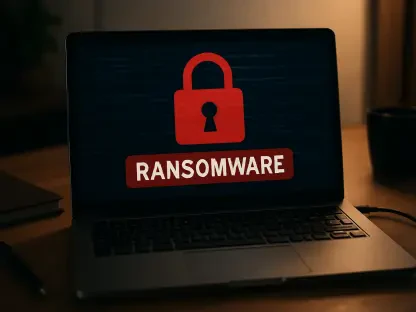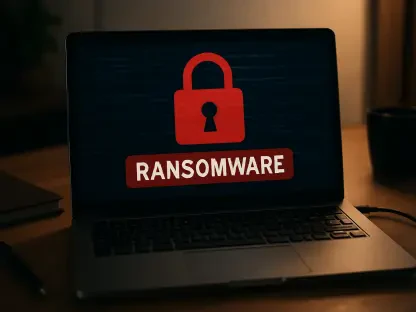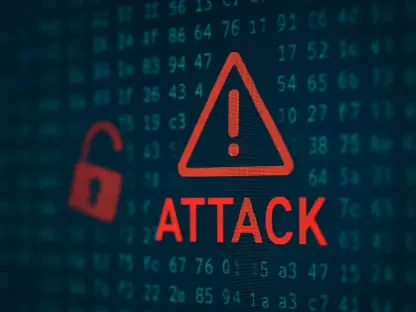In an era where cyber threats are evolving at breakneck speed, the disconnection between network and security teams poses significant risks. Skybox Security’s report “Breaking Down Exposure Management Silos: Confronting the Network-Security Disconnect” sheds light on this critical issue, offering insights into how organizations can fortify their defenses against increasingly sophisticated cyber threats, especially those powered by artificial intelligence (AI).
The Importance of Network-Security Collaboration
Formal Processes and Perceived Effectiveness
A substantial 90% of organizations have established formal processes designed to facilitate collaboration between network and security teams, reflecting a widespread recognition of the importance of such integration. These procedures aren’t mere bureaucratic formalities; they serve as critical defense mechanisms in the fight against cyber threats. Decision-makers are notably optimistic about these efforts, with 81% considering their current collaborative efforts to be effective and 82% feeling satisfied with their information-sharing practices. However, beneath this facade of confidence, there are notable concerns regarding the actual efficacy of these collaborations in countering cyber threats effectively.
Despite the high levels of optimism reported by decision-makers, underlying anxieties reveal a more complex picture. Over 55% of respondents express moderate to significant concerns about potential security incidents attributable to inadequate collaboration between teams. This apprehension is particularly pronounced among C-level executives, with 67% of them sharing this sentiment. Alarmingly, nearly 45% of organizations have experienced communication failures in the last year, which resulted in delays in reporting or addressing security incidents. These statistics underscore the pressing need to bridge the gap between perceived and actual effectiveness in collaborative efforts to ensure robust network and security postures.
Challenges in Collaboration
Human Error and Systemic Miscommunication
A significant portion of professionals, 76% to be exact, believe that miscommunication has detrimentally impacted their organizations’ security postures. This statistic shines a light on the pervasive issue of human error that often stems from incompatible systems and siloed organizational structures. Alarmingly, half of the respondents pinpoint these structural and systemic issues as the most significant barriers to effective teamwork between network and security teams. These complications can lead to critical oversights, creating exploitable vulnerabilities that cybercriminals are quick to capitalize on, thus exposing the organization to potentially severe breaches.
Siloed structures and incompatible systems not only impede effective communication but also exacerbate the risk of human error. These barriers limit the seamless flow of information and complicate coordinated efforts, especially when rapid response is crucial. Given the ever-evolving sophistication of cyber threats, any lapse in communication or collaboration can prove disastrous. Organizations need to address these structural and systemic issues head-on to build a defense mechanism resilient enough to counteract increasingly advanced cyber threats. Effective teamwork and integrated systems are fundamental to creating a security posture robust enough to face current and future challenges.
Solutions and Future Trends
Inclination Toward Integrated Solutions
To bridge the collaboration gap, there’s a strong inclination within organizations toward implementing integrated solutions. As many as 61% of these entities are inclined to adopt integrated solutions for managing vulnerability and network security. This inclination is even more pronounced among those aware of the severe consequences of collaboration breakdowns, with 92% likely to implement such solutions. These integrated systems are designed to enhance communication and streamline processes between network and security teams, ensuring a more unified and proactive approach to managing threats.
Organizations that prioritize integrated solutions stand to benefit from enhanced cybersecurity postures, as these systems facilitate real-time information sharing and more efficient vulnerability management. By breaking down silos and enabling seamless collaboration, integrated solutions help identify and mitigate potential risks before they can be exploited by cybercriminals. In an environment where cyber threats are constantly evolving, the adoption of integrated solutions is not just a strategic advantage but a necessity. This trend reflects a growing recognition of the need to unify efforts and leverage technology for more robust and effective security measures.
The Role of AI in Enhancing Collaboration
Artificial intelligence (AI) has the potential to significantly enhance collaborative efforts between network and security teams. By automating routine tasks and providing predictive analytics, AI can help identify vulnerabilities before they are exploited. The CEO of Skybox Security, Mordecai Rosen, underscores the critical importance of convergence between security and network operations to counteract AI-driven threats. This call to action emphasizes that the integration of AI into security operations is more than a strategic move; it’s crucial for the survival of organizations in the face of complex cyber threats.
AI’s role in cybersecurity is multifaceted, from automating threat detection to predicting and thwarting potential attacks. By leveraging machine learning algorithms, AI can analyze vast amounts of data to identify patterns and anomalies that might indicate security breaches. This capability enables network and security teams to respond more swiftly and accurately to emerging threats. Furthermore, AI can facilitate better decision-making by providing actionable insights, thereby enhancing the overall effectiveness of security measures. As cyber threats grow increasingly sophisticated, the integration of AI into cybersecurity strategies becomes imperative for maintaining a resilient and adaptive defense posture.
Addressing the Imminent Threat of AI-Powered Cyberattacks
The Threat Landscape
The urgency of addressing collaboration gaps is underscored by the looming threat of AI-powered cyberattacks. These attacks are expected to become more frequent and sophisticated within the next 12 months, presenting challenges even for organizations with advanced security measures. The dynamic nature of AI-driven threats requires a proactive and unified approach to defense. Traditional security measures may no longer suffice, as cybercriminals exploit AI to develop more cunning and effective tactics. Organizations must therefore remain vigilant and adaptive, continuously enhancing their collaborative efforts to stay ahead of these advanced threats.
The rapid evolution of AI technology has led to its increasing use by malicious actors to automate and enhance cyberattacks. These AI-powered attacks can bypass conventional security measures by learning from and adapting to defenses in real-time. This makes the threat landscape more unpredictable and challenging to navigate. To combat this, organizations must employ a multifaceted approach that combines advanced technology with enhanced collaboration and communication. By doing so, they can build a more resilient and agile defense system capable of anticipating and mitigating the latest cyber threats. The integration of AI-enhanced security measures is not just an optional upgrade but a critical necessity in the face of evolving cyber threats.
Strategic Importance of Unified Approaches
The convergence of network and security operations is not merely a strategic advantage; it is an existential imperative. Organizations need to adopt a unified approach to managing these functions to mitigate risks effectively. This involves not just technological integration but also fostering a culture of continuous improvement and collaboration. By breaking down silos and promoting cooperation between network and security teams, organizations can build more resilient security postures. This unified approach enables more effective identification and mitigation of vulnerabilities, ensuring that defenses are robust enough to counteract increasingly sophisticated cyber threats.
A strategic, unified approach requires organizations to invest in both technology and human capital. Training and development programs are essential to equip network and security teams with the skills needed to work collaboratively and effectively. Additionally, fostering a culture of continuous improvement ensures that teams are always adapting to new challenges and learning from past experiences. The alignment of people, processes, and technology is crucial for maintaining a strong defense against cyber threats. As AI-powered attacks become more prevalent, the strategic importance of a unified approach becomes even more pronounced, underscoring the need for organizations to prioritize and implement effective collaborative measures.
Broad Recognition and Consensus
Concern Among Higher-Level Executives
The high level of concern among C-level executives signifies that the risks of insufficient collaboration are recognized at the strategic level. This alignment of concern from top executives to operational teams suggests a broad recognition of the problem and a consensus on the need for better collaborative mechanisms. Addressing these concerns requires a top-down approach, where leadership prioritizes and actively supports initiatives to enhance collaboration between network and security teams. By doing so, organizations can create a more cohesive and proactive defense strategy, capable of addressing the dynamic nature of modern cyber threats.
The recognition of collaboration gaps at the executive level is crucial for driving organizational change. Executive support can help secure the necessary resources and foster a culture that values and prioritizes effective collaboration. This top-down commitment ensures that collaborative efforts are not just superficial but are ingrained in the organization’s operational framework. With executive backing, network and security teams can work more effectively together, benefiting from streamlined processes and unified objectives. The broad recognition of these issues highlights the need for a concerted effort to bridge the collaboration gap and build a more resilient cybersecurity posture.
Moving Beyond Formal Processes
While many organizations have formal processes in place, the real challenge lies in ensuring these processes translate into effective action. This requires continuous monitoring and evaluation of collaborative efforts to address any gaps proactively. Organizations must go beyond merely establishing formal procedures and focus on their implementation and effectiveness. Regular assessments and feedback loops can help identify areas for improvement and ensure that collaborative efforts are constantly evolving to meet the demands of an ever-changing threat landscape. This proactive approach is essential for maintaining a robust and adaptive security posture.
Moving beyond formal processes entails creating an environment where continuous improvement and adaptation are part of the organizational culture. This means investing in ongoing training and development, encouraging open communication, and fostering a sense of shared responsibility among network and security teams. By focusing on the practical application and effectiveness of collaborative processes, organizations can better protect themselves against cyber threats. The dynamic nature of cybersecurity requires a flexible and adaptive approach, where lessons learned from past experiences are used to inform future strategies. By prioritizing continuous improvement, organizations can ensure that their collaborative efforts are always aligned with the latest security challenges and best practices.
Conclusion
Integrating Diverse Perspectives and Statistical Insights
The Skybox Security report provides a comprehensive overview, blending statistical data, respondent insights, and expert opinions. This creates a well-rounded narrative that underscores the critical importance of overcoming communication silos and integrating solutions. The emphasis on AI-driven threats contextualizes these findings, urging immediate and comprehensive action to mitigate risks.
One of the key takeaways from the report is the glaring discrepancy between perceived and actual effectiveness in collaborative efforts. While many organizations have formal processes in place, the real challenge lies in ensuring these processes translate into effective action. The report highlights the significant impact of human error and miscommunication, as well as the structural and systemic issues that hinder effective collaboration. These findings underscore the need for organizations to move beyond formalities and focus on practical solutions that enhance communication and cooperation between network and security teams.
Motivating Stakeholders for Effective Collaborative Measures
In today’s rapidly evolving landscape of cyber threats, the gap between network and security teams can create significant vulnerabilities. Skybox Security’s latest report, “Breaking Down Exposure Management Silos: Confronting the Network-Security Disconnect,” highlights this critical issue. The report underscores how the disjunction between these teams can escalate risks, especially as cyber threats become more advanced, often leveraging artificial intelligence (AI) to breach defenses.
To effectively combat these increasingly sophisticated threats, it’s crucial for organizations to bridge this communication and operational divide. By aligning network and security functions, companies can create a more resilient defense strategy. The Skybox Security report offers valuable insights into achieving this alignment, providing actionable recommendations for integrating network and security protocols. This connection not only enhances response capabilities but also ensures a more robust defense against AI-powered cyber attacks. Addressing this disconnect is essential for fortifying an organization’s overall security posture in an era where cyber threats are relentlessly advancing.









